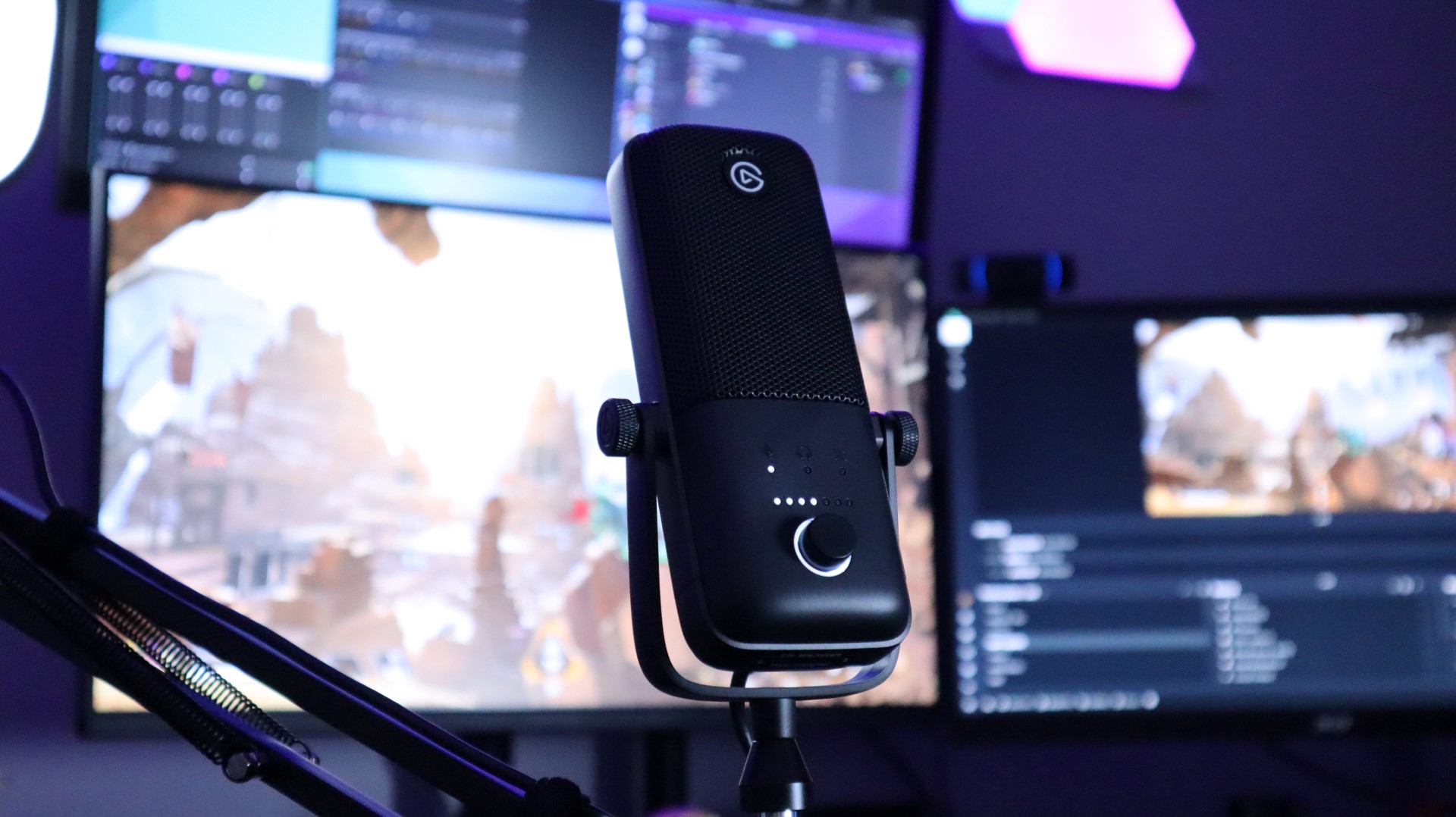Elgato Wave:3 Overview
Our first impression of the Wave:3 was that it looked a bit like an updated version of an old-school radio microphone – something about the rounded, rectangular shape just feels familiar to us. Measuring right around 6″ in height and 2.5″ in width, the body of the Wave:3 is relatively small compared to some microphones we have looked at in the past, like the Thronmax MDrill One Pro and the Samson G-Track Pro. At just over 1.5″ thick, there really isn’t too much bulk to this microphone, which almost makes it feel a bit underwhelming. This feeling can also be attributed to the fact that the majority of the microphone is made of plastic, which while still looking nice, lowers the physical quality of the microphone in our opinion. Aside from the plastic materials, the build quality of the Wave:3 is top-notch. Form and fit are quite good, and every aspect of the Wave:3 seems like it had thought put into it. This most likely comes in part from Elgato teaming up with Lewitt audio to bring forth their first microphone.
Taking a look at the front of the microphone, we see that it is broken up into two major sections, the upper two thirds are dedicated to housing the 17mm Electret condenser capsule and associated dampening materials. The lower third of the Wave:3 is home to a few LED indicators, as well as a small adjustment knob.

Taking a closer look at the upper portion of the microphone, we see a pretty standard looking “speaker grille” perforation pattern that not only helps protect the internal components, but allows sound to pass through the material and into the self-contained wind filter. Towards the top of the front of the Wave:3 is a small, circular Elgato logo badge for a bit of brand recognition.
As we previously mentioned, the lower third of the front of the Wave:3 is home to a few LED indicators, all of which glow white, and a small control knob. There are three slightly raised symbols just above three accompanying LEDs, indicating Mic Gain, Monitor Volume, and Mic/PC Mix, from left to right. Just below these three LEDs is a row of seven additional white LEDS, which are used to display the level of the aforementioned settings. Last, and certainly not least, is the small knob just below all of the LEDs. This knob can be pressed to cycle through the Mic Gain, Monitor Volume, and Mic/PC Mix modes, and then rotated to adjust each mode. Additionally, when live, a thing ring surrounding the knob is illuminated with white LEDs, and when the Wave:3 is muted, the ring glows red.
Moving on to the rear of the microphone, we find the same upper two thirds being occupied with the perforated grille material. This seemed slightly odd, as the Wave:3 only supports a single polar pattern, cardioid, which aims to reduce the amount of sound picked up from behind the microphone. Of course, the internal layout could be more restrictive to sound from this side of the microphone, and the perforation definitely keeps the aesthetics looking the same all the way around.

Towards the bottom of the rear of the microphone is a USB-C connector, as well as a standard 3.5mm headphone jack. The Type-C connection is used to connect the included USB cable, while the 3.5mm jack is available for real-time, direct monitoring of the microphone.
The sides of the Wave:3 are quite plain, with just a plastic trim piece that surrounds the frame of the microphone. The right side is home to an almost hidden “Wave:3” printing for a bit of style. Additionally, there are threaded mounts to attach the included microphone desktop stand to the microphone body itself. The thumbscrews used to tighten the stand are one of the few metal items found on the Wave:3, and their ends are stamped with the Elgato logo.


At the top of the Wave:3 is a small capacitive mute sensor that can be used to quickly silence the microphone with a light touch. This feature is similar to that of the HyperX Quadcast that we looked at last year, and is definitely a nice creature comfort feature to have.
As we mentioned previously, the Wave:3 comes with a microphone stand, which is attached to the microphone by default. The “U” shape of the stand is once again made of plastic, and has a bit more flex to it than we would have liked to see, though it did seem sturdy enough to us during our time with the microphone. At the bottom of the microphone stand is a metal base that can be unscrewed to make way for the aforementioned microphone arm adapter. This metal base, along with it’s 1.5″ riser, results in the Wave:3 being right around 8.5″ tall when the two are paired up. This solid metal base, along with a large rubber pad, help keep the Wave:3 in place when it is not being used on a microphone arm.







